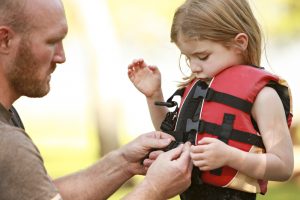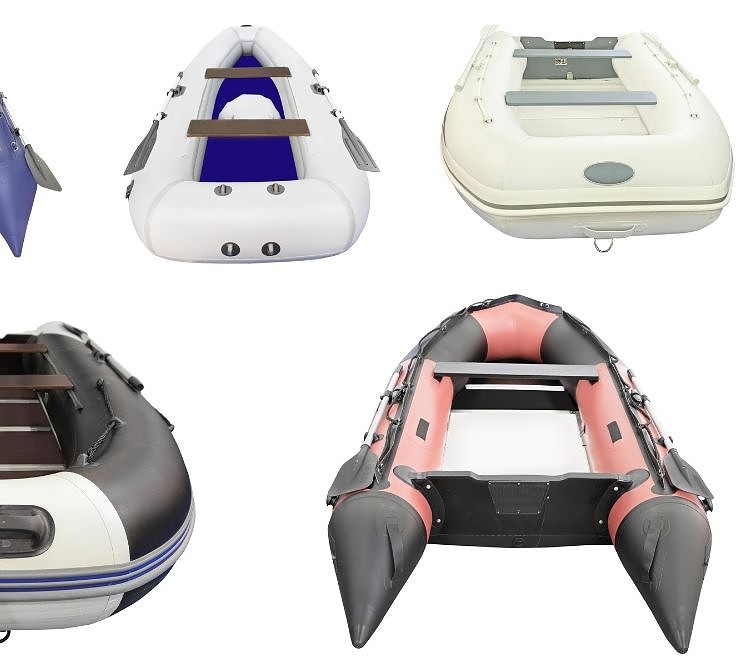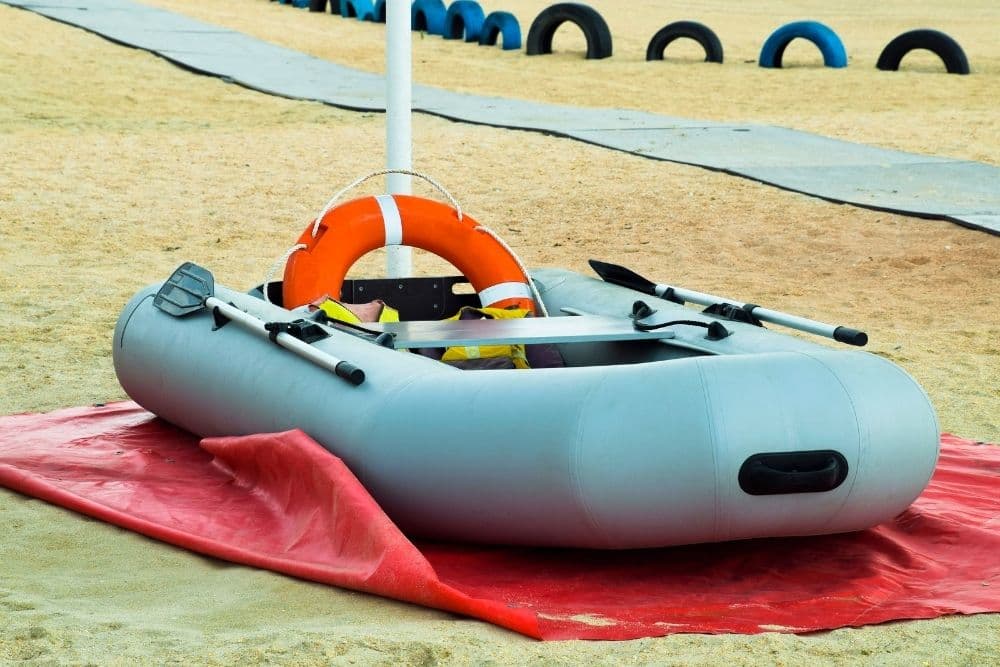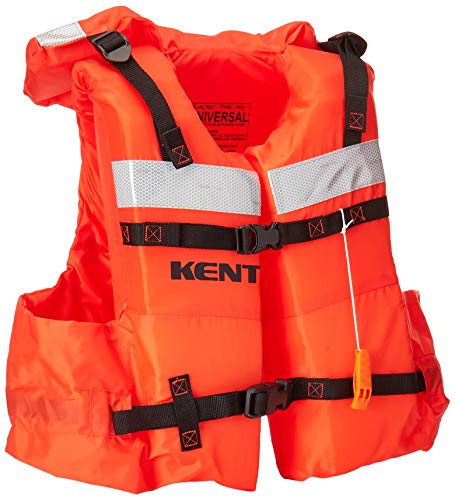Life jackets can be controversial. On the one hand, they save lives. On the other, many boaters dislike them because they feel that they are unnecessary or that they hamper movement.
If you have questions about life jackets on your inflatable boat, keep reading. Here’s what you need to know to stay both comfortable and safe.
Please note that the laws and recommendations mentioned here reflect the United States Coast Guard’s regulations and best practices. Individual states may have other laws. If they do, you need to follow these instead of the ones listed here.
It is your responsibility, as a boater, to know what the laws regarding life jackets are for your particular state. You can find these online or by asking local boating authorities.
Table of Contents
- What are the Laws for Life Jackets on Inflatable Boats?
- Types of Life Jackets
- Sizing a Life Jacket
- For What Size Boat Do You Not Need a Life Jacket?
- Are There Any Boats Where Life Jackets are Not Required?
- At What Age Do You Not Have to Wear a Lifejacket on a Boat?
- Are Inflatable Life Jackets Legal?
- Is it Illegal to Kayak Without a Life Jacket?
- Conclusion
What are the Laws for Life Jackets on Inflatable Boats?

Inflatable boats have the same laws surrounding life jackets as traditional hardhulled vessels do. Those laws are:
- Your boat needs one properly-fitted life jacket onboard for each person at all times.
- All life jackets should be in good condition and must be checked regularly to verify that this is so.
- Children under 13 years of age need to wear their life jackets at all times when onboard a boat, unless they are below the deck or in a fully-enclosed cabin.
- Any boat over 16’ long must have an additional, throwable flotation device. Kayaks and canoes are exempted from this rule.
Types of Life Jackets
There are several types of life jackets. The Coast Guard usually wants you to have flotation devices that fall into categories I, II, or III, though types IV and V are useful in certain circumstances. Most life jackets are labeled with the type of jacket on the tag.
You can understand the types as follows:
- Type I life jackets offer the most buoyancy and are the kind that commercial vessels are required to carry. They are also bulkier and less comfortable than some of the other options.
- A Type II life jacket offers less buoyancy and is designed for use near the shore. If you could swim in, look for this kind of jacket. It will turn you face-up in the water and is more comfortable than the Type 1 life jackets.
- Type III life jackets are considered flotation aids, rather than life vests. They are usually used during water sports and are more comfortable than Types I and II. They will help you turn face-up but you may have to initially flip yourself over.
- Type IV flotation devices are throwable, like life preservers. They aren’t designed to be worn and a person must be able to hold on to them until they can be towed in.
- Type V life jackets and flotation devices are designed for special use only, though one of these may work on boats, too. Kayakers may use these, or paddle boarders, or people working on the water. They are comfortable and allow for maximum movement.
Last update on 2025-11-29 at 22:47 / Affiliate links / Images from Amazon Product Advertising API
Sizing a Life Jacket

Finally, you must get a life jacket that is the right size for your needs. Most life jackets are labeled by weight. However, this is only a starting point.
Make sure that you have a life jacket that is appropriate for your needs. You can always talk to someone at a boat store to make sure you are looking at all of the jackets that might work for you.
If you are planning to kayak or use a stand-up paddleboard, decide if you want to purchase a different life jacket for these activities. You might also like to use the same one for all of your activities on the water.
When you find a life jacket that is designed for your activities and fits someone of your weight, try it on. Make sure that it fits well around the chest. It should be snug enough that it won’t accidentally come off but still allow for you to move freely.
Put the life jacket all the way on. Make sure that the buckles, zippers, or other fasteners work as they should and can be tightened or loosened so the life jacket fits you perfectly.
Get all of these in the right place before you take the life jacket out on the water in your inflatable boat. That way, you can put it on fast if you need to.
For What Size Boat Do You Not Need a Life Jacket?

Many people think that life jackets are only required on small boats. Others believe that they do not have to wear a life jacket if their boat is over a certain size.
While some states have laws like this, the United States Coast Guard does not. Every single boat, no matter how big or how small, must follow the rules outlined above.
Some rules are different for large commercial vessels, like cruise ships, but there are no inflatable boats that qualify under these rules. If you own or are a passenger on an inflatable boat, you need to follow the life jacket rules outlined above.
Are There Any Boats Where Life Jackets are Not Required?

The laws surrounding life jackets are different when you’re talking about large vessels, like cruise ships. While these vessels are still required to have a life jacket for every passenger. In fact, they are asked to carry 5% more life jackets than the number that may be in use at any time.
They must store these life jackets in obvious places near muster stations or close to where people would board lifeboats in case of an emergency. These must be easy to distribute and passengers must be instructed regarding how to put them on and use them beforehand.
However, even in these situations, the boats are required to have life jackets. There are no conditions under which a boat or other vessel (including a kayak or a stand-up paddleboard) is not required to have a life jacket onboard for each person.
At What Age Do You Not Have to Wear a Lifejacket on a Boat?

According to the United States Coast Guard, children over 13 years old do not need to wear a life jacket while on the deck of a boat. However, this age varies significantly among states and you will need to check local laws.
You should also evaluate each child’s comfort onboard boats and ability to swim. Older children who have never been on a boat or who are not confident swimmers should wear a life jacket even if they are older than 13. The same goes for adults!
It is a better idea to gauge whether or not a child should wear a life jacket based on the individual child and not just whether the child’s age is more than 13. This practice ensures safety and makes sure that everyone on a boat can have a fun, relaxing time.
Are Inflatable Life Jackets Legal?

Inflatable life jackets are legal under certain conditions. These are worn like regular life jackets or around the waist, kind of like a fanny pack. If you need to use them, you pull a cord and the jacket inflates quickly.
These life jackets are considered Type V flotation devices by the Coast Guard. There are some rules surrounding inflatable life jackets that are not necessarily the same as the rules surrounding other life jackets. They are as follows.
- Inflatable life jackets can only be used by people who are 16 years old or older.
- Inflatable life jackets need to be worn whenever a person is on board unless they are in an enclosed cabin or below deck. If this is the case, they must be readily and easily available at all times.
- Inflatable life jackets may not be used on personal watercraft, like a jet ski or a Sea-Doo. They may also not be worn by people participating in towed sports, like water skiers or wakeboarders.
- Inflatable life jackets must have a full cylinder and any and all status indicators must be green and indicate that the jacket is ready for use.
Inflatable life jackets can be a great option for people who are confident out on the water and for those who need free and easy use of their arms and hands when they are out there.
Is it Illegal to Kayak Without a Life Jacket?

According to the United States Coast Guard, a kayak qualifies as a vessel whenever it is not operated in a surfing, bathing, or swimming area. Since many locations prohibit kayaks in these areas, it is best to always have a life jacket on board.
The rules for life jackets on kayaks are the same as the rules for life jackets on any other vessel. The only difference is that kayaks are grouped into the category of vessels under 16’ long, even if they are longer than that.
Because they are grouped like that, kayaks do not require throwable flotation devices. The Coast Guard groups them this way because kayaks do not usually carry as many people as a 16’ boat would.
Also, people in kayaks are less likely to fall overboard or jump out and need help getting back into the craft.
Conclusion
Life jackets are controversial but they should not be. They save lives out on the water every day. After all, you don’t want to have the worst happen to you or to someone you love when you’re out on the lake or the ocean.
This guide should help you find the very best life jackets for use on your inflatable boat. Once you have them, you can go out on the water with the confidence that comes from knowing that you will be safe.

I created this site to help people – to help you – with your boat problems. Instead of helping one person at a time, I want this website to be the “one-stop-shop” for everyone’s boating concerns. Read more.






